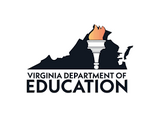
English Instructional Plan – Context Clues: Grade 3
- Subject:
- English
- Reading
- Material Type:
- Lesson Plan
- Author:
- VDOE Project Team
- Date Added:
- 04/13/2022

English Instructional Plan – Context Clues: Grade 3
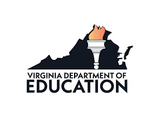
English Instructional Plan – Context Clues Grade 4-5

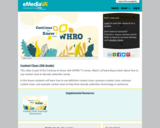
This video is part of the Continue to Know with WHRO TV series. Watch LaTissha Boyce teach about how to use context clues to decode unfamiliar words.
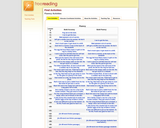
Students engage in reading sentences and/or passages with fluency and accuracy

In this unit, students explore the relationship between living things and their environment and how the environment can both positively and negatively impact a species' ability to survive. Using the Next Generation Science Standards as a guide, students will learn about different species, what they need for survival, their life cycle, and how they have adapted for survival. Then students will be challenged to create arguments that explain why some organisms are able to survive well, some survive less well, and others can't survive at all in certain habitats. Through this unit, along with others in the sequence, students will use the scientific information they learn to think critically about the world around them.
The Science of Living Things texts were chosen as mentor texts for this unit because the author, Bobbie Kalman, uses text features and clear language to clearly communicate complex concepts about the animal kingdom, life cycles, and animal adaptations. As readers, students will be challenged to constantly ask and answer questions about key details in the text, explicitly referring to the text to support an answer or a question. Over the course of the unit, students will also deepen their understanding of how Bobbie Kalman uses text features to not only organize information, but to help a reader learn new information and facts about a subject. Students will also work on using context clues to figure out the meaning of genre-specific vocabulary, find the main idea of a section, and explain cause and effect in relation to scientific concepts.
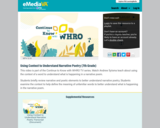
This video is part of the Continue to Know with WHRO TV series. Watch Andrew Sytsma teach about using the context of a word to understand what is happening in a narrative poem.
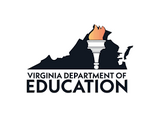
English Instructional Plan – Utilizing Context Clues to Determine Connotation
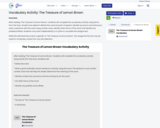
After reading "The Treasure of Lemon Brown," students will complete the vocabulary activity using terms from the story. Student are asked to definte the word and part of speech, identify synonyms and antonyms, write a sentence with the word using context clues, identify other forms of the word, and identify any prefixes/suffixes. Students may work independently or in pairs to complete the assignment. While the attached document is specific to "The Treasure of Lemon Brown," the assignmet format may be used for vocabulary words from any text selection.
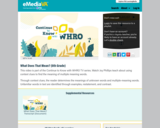
This video is part of the Continue to Know with WHRO TV series. Watch Joy Phillips teach about using context clues to find the meaning of multiple meaning words.
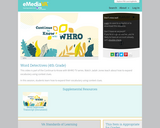
This video is part of the Continue to Know with WHRO TV series. In this session, students learn how to expand their vocabulary using context clues.
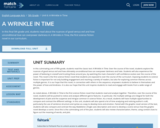
In this culminating unit of fifth grade, students read the classic text A Wrinkle in Time. Over the course of the novel, students explore the nuances of good versus evil and how ultimately unconditional love can overpower darkness and hate. Students will also experience the power of believing in oneself and trusting those around you, by watching the main character's self-confidence evolve over the course of the novel. This novel is the first science fiction novel that students are exposed to over the course of the curriculum. Exposing students to science fiction is important for not only building engagement and reaching a variety of readers, but also for exploring common themes across multiple genres. It is our hope that this novel, in connection with others in the sequence, empowers students to believe in themselves and the power of love and kindness. It is also our hope that this unit inspires students to read and engage with books from a wide range of genres.
As noted above, A Wrinkle in Time is the first science fiction novel that students read and analyze together. Therefore, over the course of the novel, students will be pushed to notice and analyze different genre features. In particular, the multiple settings are integral for both the development of plot and the suspense and intrigue common in science fiction. As a result, students will have multiple opportunities to compare and contrast the different settings. In this unit, students will also spend a lot of time analyzing and noticing author's craft, particularly the use of sentence structure and syntax as a way to develop tone and emotion. Paired with the graphic novel version of the text, students will also compare and contrast the way Madeleine L'Engle uses description and voice to develop a scene versus how the graphic novel develops a scene. Since this is the culminating unit of the year, students will also review characterization, theme, using context clues to figure out the meaning of words, and plot.